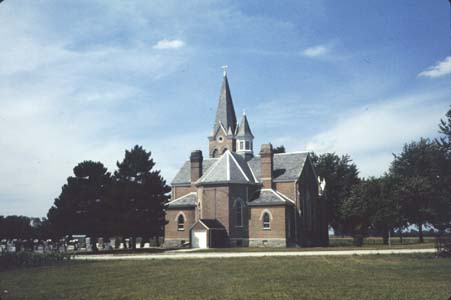 |
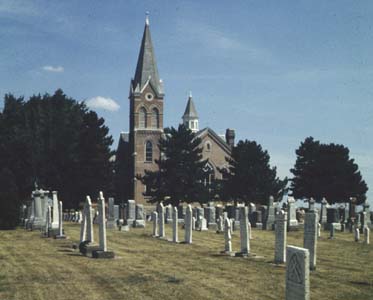 |
 |
 |
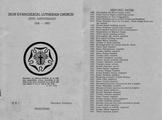 |
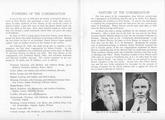 |
 |
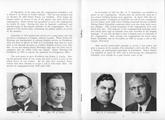 |
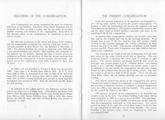 |
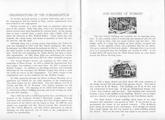 |
 |
 |
 |
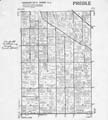 in Adams County |
"It was in the year of 1836 that the family of Friedrich Buuck arrived in Fort Wayne and purchased a tract of land, sight unseen, about 16 miles southeast of Fort Wayne in the northwest corner of Adams County. Upon this tract of land the Buuck family built the first log cabin in the area. Soon other families began to arrive and thus was formed a small settlement which later was given the name of Friedheim. In June of 1837 a young pastor from Fort Wayne, Jesse Hoover, found out about this small settlenient of German Lutherans. Making the trip either on foot or on horseback, Pastor Hoover began paying regular visits to conduct services in the homes of the settlers. On February 25, 1838, this small group met to organize a congregation, the first rural congregation in Adams County. At this meeting six candidates were nominated and two weeks later, on March 11, the first election of officers was held. The first officers of the congregation were Friedrich Buuck, elder, and Christian Fuhrman and Heinrich Loeffler, deacons. The charter members of the congregation, 26 adults and 30 children, were as follows:
During the absence of Pastor Wyneken, Zion Congregation was served by a Pastor Knape, a young candidate for the ministry. This man was inexperienced and not very well grounded in the Lutheran doctrine. He exchanged pulpits with ministers of other religions and conducted prayer and revival meetings. For a while it seemed as if the young congregation might break away from the Lutheran doctrine. In 1843 Pastor Wyneken returned from Germany and resumed his work with new vigor. Having been strengthened both physically and spiritually, he restored the true Lutheran doctrine in our congregation. Shortly after this, Pastor Wyneken began the training of two young men for the ministry. One of these was Gerhard Heinrich Jaebker who had taught school here during Pastor Wyneken's absence. In 1845 Pastor Wyneken accepted a call to a Lutheran church in Baltimore. Pastor Wyneken later served as President of the Missouri Synod from 1850 to 1864. During a portion of this time he resided on his farm in Preble Township, about a mile from the present church. This house is still standing on the farm owned by Gerhard Bultemeier, but it is no longer being used as a dwelling.
In 1846 Zion Congregation extended a call to Pastor Jaebker, one of the young men whom Pastor Wyneken and later Dr. Sifiler had trained for the ministry. It was Pastor Jaebker who in 1847 represented Zion Congregation at the organizational meetings of the Evangelical Lutheran Synod of Missouri, Ohio, and other States. During Pastor Jaebker's pastorate the congregation enjoyed phenomenal growth, and it was also during this time that the third church building was erected. Pastor Jaebker served diligently and faithfully in our midst until God called him out of this world in 1877 at the age of 56 years. His body lies buried on our cemetery.
After Pastor Jaebker's death, the congregation extended a call to Pastor Herman Meyer. He served the congregation for only five years and eight months until his death in April of 1883. He, too, lies buried on our cemetery. It was during Pastor Meyer's pastorate that our daughter congregation, St. Paul's of Preble, was organized. In July of 1883 the Rev. J. L. Daib was installed as pastor of our congregation. Of him Pastor Sauer wrote in "Der Lutheraner" that he was a very energetic man who worked day and night. This soon took its toll and in April of 1888 Pastor Daib had to resign because of ill health. After a vacancy of several months, a call was extended to Pastor H. Schlesselmann of Bremen, Indiana. Pastor Schlesselmann served the congregation not quite five years, leaving in August of 1893 to accept a call to Euclid, Ohio. In September of the same year the congregation extended a call to Pastor C. B. Preuss of Avilla, Indiana. The call was accepted and on October 29, 1893 Pastor Preuss was installed. Thus began the longest tenure of service of any of the pastors who have served the congregation. Pastor Preuss was permitted to serve the congregation for nearly 42 years. During this time he baptized, confirmed, and married many of the present members of the congregation. He resigned in 1935 shortly after celebrating his golden jubilee of service in the ministry.
September 8, 1935 marked the arrival of a young pastor who had served as a missionary in Calgary, Alberta, Canada. Pastor Walter H. Werning was instrumental in starting English services in Friedheim. This was done in March of 1936 on a bi-monthly basis and two years later it was deemed necessary to conduct English services every Sunday. It was also during Pastor Werning's time that the choir was reorganized and the Adult Club was started. Pastor Werning left Friedheim in 1939 to assume the pastorate in Youngstown, Ohio. The next pastor to serve Friedhelin was Walter J. Luecke. During his pastorate many of our young men had to leave to serve the aimed forces of our country. By the time they returned, Pastor Luecke had been released to accept a call to Cleveland, Ohio. He served our congregation from 1939 until 1943.
In November of 1943 the Rev. E. T. Schmidtke was installed as pastor of our congregation. Shortly after his arrival the need for a new school building became niore apparent. In April, 1945, the congregation passed a resolution to build the new school, but construction was not begun until 1948 when the building materials became available. During Pastor Sclimidtke's pastorate there were also some other necessary changes. The various treasuries of the congregation were combined into one. The minutes of the congregational meetings which had always been kept in German were now recorded in the English language. It was also decided to have a laymarn serve as chairman of the congregation. After serving our congregation for seven years, Pastor Schmidtke left in November of 1950 to accept a call to Sheboygan, Wisconsin.
After several unsuccessful attempts to secure a new pastor and after a vacancy of five months, Zion extended a call to the Rev. Albert A. Fenner, an institutional missionary Cincinnati. Pastor Fenner was installed on April 29, 1951, and is still serving the congregation faithfully, even though he is past seventy years of age.
The first church building was certainly not an imposing structure. It was a modest cabin of round logs and measured only 16 x 20 feet. It had no floor, only two small windows and one door. The pulpit, made of a large log resting on three pillars, occupied one corner. In the opposite corner was a primitive bed for the pastor. The pews consisted of three-inch planks. Although there is no record of it, it is presumed that this building was erected in 1838. It was located about 100 yards from the Albert Buuck home on a line drawn toward the Edwin Werling home.
In 1842 a larger church was built about 200 yards southeast of the bridge located 120 rods south of the present church. This land is now owned by R. H. Buuck. The building was 26 by 36 feet, and was constructed of hewn logs. It had an old-fashioned shingle roof, a floor, four windows, and one door. This building had centralized heating a stove in the middle of the building. When it was no longer used as a church, it served as a granary for the Von Behren faimly.
The third church, a frame building which many of our older members still remember, was erected in 1852. it was located in approximately the center of our present cemetery. (The Koldewey grave marks the location of the cornerstone.) Even though the church had a steeple, the bell was located in a small building behind the church. This was the same bell that hangs in our present church belfry. The building was later torn down and the frame was used to build a barn on the Caston farm.
The present church building was erected in 1902 at a cost of about $15,000. The cornerstone was laid on May 11, 1902 and the building was dedicated on January 25, 1903. It measures about 60 by 62 feet with a steeple about 92 feet high. The meeting room and rest rooms in the basement were installed in 1957.
Originally our church buildings served also as classrooms. In 1860, however, it was necessary to construct a separate building for the education of our children. This was the building which most of our adult members remember immediately east of the south end of our cemetery. It was originally constructed with one classroom and living quarters for the teacher. After a house was purchased for the teacher and his family in 1882, the north room was used for confirmation instruction. In 1920 this room was converted into a classroom for the primary grades. The school building had no basement, no furnace, no rest rooms, and no water supply. The pupils were responsible for bringing in the fuel for the space heaters and carrying water from the teacher's well. The building was razed in 1949.
In 1949 the present school building was completed at a cost of about S85,000. The cornerstone reads, "Erected in honor of the men who served their country in World War Il." At the time it was erected, the enrollment of the school was less than thirty pupils. The building contains two classrooms, office, library, full basement, and kitchen. Originally there was also a room for confirmation instruction, but this space was added to the south classroom in 1959. In 1961 temporary facilities were provided for a third classroom in the northeast corner of the basement. On Sundays every nook and cranny is used for the fifteenSunday School classcs and one adult Bible class. The basement serves as lunch room, meeting room, and with the erection of a temporary stage as an auditorium."